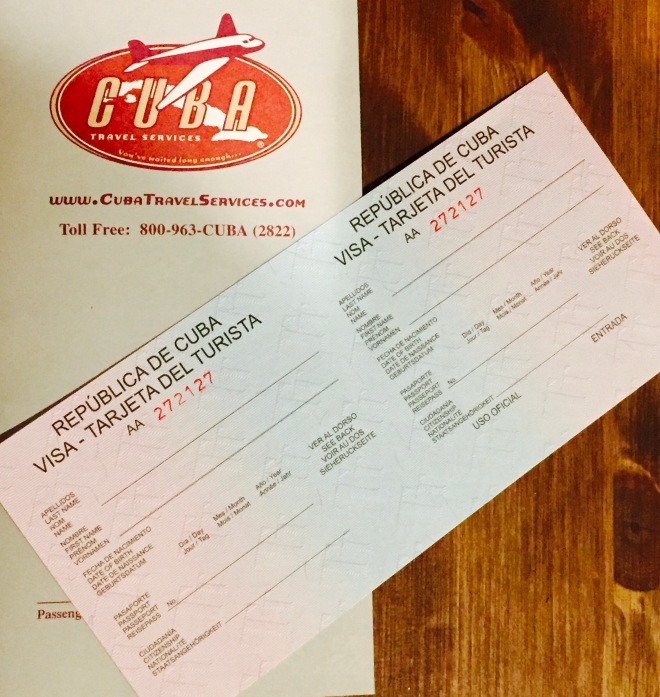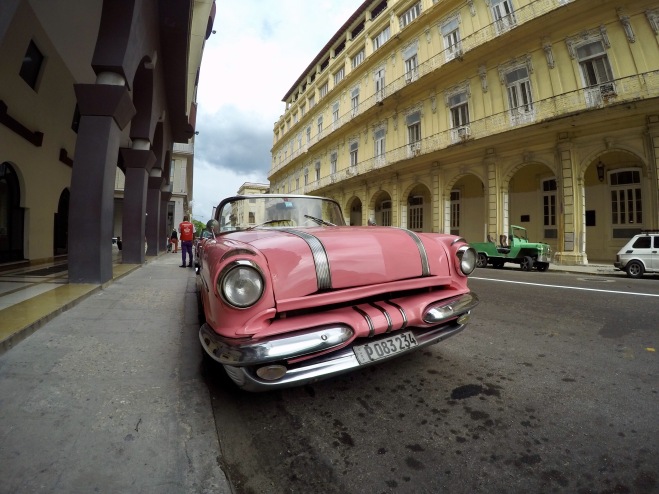

We often get asked by fellow Travelers about our recent trips to Cuba. They have questions about what it’s like, how to get there, is it safe, etc., etc. So, in order to give some insight and perspective, we’ve put together a short list of some of the most essential tips to guide you through on your way to Cuba.
How to fly to Cuba?
Since August 2016, more large airlines are now flying to Cuba from the US. Previously, we had to travel through Miami via a chartered flight. Now, we were able to book our flight through Alaska Air and are flying direct from Los Angeles to Havana. What’s nice about Alaska Air, is that they have a link on their website that guides you through the purchase of your visa, and, they also call you about a month before your flight to make sure you have the proper paperwork needed for you flight there:
https://cubavisaservices.com/product/touristvisa-card/
https://www.alaskaair.com/content/cities/flights-to/cuba.aspx
Other airlines that currently have flights out to Cuba include: American, Delta, JetBlue, Frontier, Silver Airways, Spirit, Southwest, Sun Country, and United. On average, a round trip ticket to Havana is currently running around $400+!!
What is the Visa process?
Although, it is still technically illegal to travel for tourism or leisure activities, if you are interested in Cuban culture, want to understand more about the amazing architecture or plan your trip so it involves interaction with local society, then you probably can fall under one of the 12 listed acceptable visa categories. Some of these categories include: journalism, education, and contribution to the Cuban people. These tend to be very vague categories that most individuals can incorporate into their visit.
In general, you can go on your own personal educational tour, and Cuban emersion trip without an official tour group as long as you set up your personal agenda of activities and have it on hand, just in case you get questioned while re-entering the US. Once in Cuba, the government doesn’t really care where you go, as long as you don’t engage in any political activity, or perceived political activity.
The visa you obtain to go to Cuba is a tourist visa, so when presented to immigration in Cuba, you tell them you are there for tourism. However, when coming back to the US, you can say you were on an education tour or one of the other 12 acceptable categories. It is very rare that you will get questioned at all, upon re-entry to the US, about why you visited Cuba, so don’t worry. The US government does ask that you keep receipts and records of your a travel for at least 5 years though. You can read further about this topic at:
https://www.treasury.gov/resource-center/sanctions/Programs/Documents/cuba_faqs_new.pdf
http://www.cnn.com/2015/12/18/travel/cuba-travel-rules-explained/
Where can I stay while in Cuba?
Hotels in Cuba are overbooked and difficult to reserve on a short notice, meaning almost six months in advance! We have also come to realize that the quality of the hotels versus the price is not so great. You can, however, go high end and stay in some of the more luxurious hotels, such as the Meliá, that are modern and beautiful, if you choose to do so.
We have noticed that the most economical and comfortable way to stay in Cuba, Havana, specifically, are via Airbnb and/or casa particulars. The housing types and quality range within these two, but most housing tenants will be friendly and welcoming as this is probably their number one source of income. We like the fact that by staying in an Airbnb, we’re contributing to the livelihood of a Cuban family.
http://www.casaparticular.com/
How much money should I bring?
Money…listen carefully, it’s best to bring enough cash on hand as it is next to impossible to use a credit card and there are no ATM’s. It’s best to carry US dollars and exchange it for cuc “convertible Cuban peso”, not to be confused with the Cuban peso also known as the CUP. $1 US dollar is approximately $1 CUC or $25 pesos. Once you arrive you can exchange your money into CUC At any bank. The Cuban banks takes about 10-13% when you exchange it.
If you pay for your stay online then you only need to bring cash for transportation, food and souvenirs and any entry to museums. Food is pretty cheap depending on where you go, but, there are also some very nice restaurants that are a little more pricey. It’s best to ask around and maybe even ask your house host what they think. We like to eat nice, so for two of us, a typical nice dinner will cost $50. A meal at that price, for two, includes appetizers. Cocktails, entrees and dessert…a pretty great bargain.
If you choose, you can also go local and spend $12 for 3-4 people, which we love to do during the day for lunch. How much you spend depends on what you are looking to eat and how chic you want to go…
Is Cuba safe?
Yes! In fact, Cuba is probably much safer than you would even imagine. We feel that as we have travelled through many “Communist” countries such as China, Cuba, Laos, Cambodia, etc., that these countries tend to be the safest for foreign tourists. Good or bad, the agenda by the government within these countries has been control, and the people that reside here tend to follow suit and are just looking to live their lives. That’s not to say you should flash your wad of cash around town, just be aware of your surroundings and be cognizant of how people live.
With all that said…Go Cuba! Get ready to explore beautiful architecture, learn to salsa dance, eat incredible local food, ride in a classic car and go make some great new friends!






Looking for thoughts on when to head to Havana after Irma.
LikeLike
Doug, I’m actually going this upcoming weekend. Most of Havana is up and running now and within the next few weeks, it should be even better. But, if you have any concerns, the best time to visit is always after hurricane season, between November to February.
LikeLike
Wonderful and explicit information. Visiting Cuba might be a welcoming change later on this year. Thank you.
LikeLike
This is great information for people looking to explore Cuba. Informative and easy to read. I can’t wait to go.
LikeLiked by 1 person